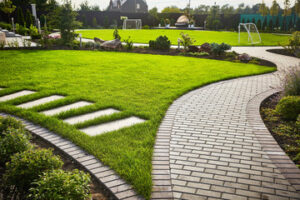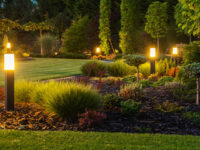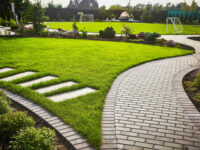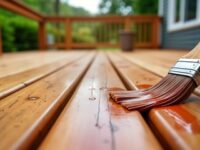Landscaping 101 – Adding Instant Grass to Your Yard
Landscaping encompasses a wide range of services, from planting and design to maintaining outdoor spaces. It involves enhancing the beauty of your lawn and home with plants and structures that thrive in your local climate and soil conditions.
Using line in your landscape design is important for creating scale and cohesion. It’s also a great way to highlight your favorite features and create a focal point. Visit https://www.landscaping-greensboro.com/ to learn more.
When you’re looking to add instant gratification to your landscaping, nothing beats sod. Whether you’re fixing bare patches, starting from scratch, or completing a new lawn installation, sod provides a beautiful and lush lawn that requires minimal maintenance. It’s a revolutionary alternative to planting seeds and waiting for grass to mature.
Sod has many advantages over seeding, including faster growth, better color retention and a more dependable foundation. It also creates a cooler outdoor climate. Dark-colored surfaces like bare soil or pavement absorb sunlight and heat, but the green surface of sod reflects that sunlight and releases water vapor through transpiration, creating a natural cooling mechanism. In addition, the roots of sod penetrate deeper into the soil, helping to break up compacted areas and improve soil structure.
A healthy sod lawn will stay lush and vibrant for a long time with proper care. Sod should be watered regularly, keeping the soil moist but not soggy. During the first month after sod is installed, avoid walking on it as much as possible to give the sod time to establish its root system. Once established, sod is resilient and can withstand moderate levels of traffic.
Choosing the right type of sod is important. Look for a type that thrives in your growing region and is resistant to local pests. For example, St. Augustine grows quickly and has a deep green color, making it ideal for the warmer southern states.
Landscapers use sod for a variety of purposes, from starting new lawns to repairing bare spots and stabilizing slopes. It’s also a popular choice for golf courses and sports fields, as it can be laid in large areas where traditional seeding is not possible.
Whether you’re using sod to start from scratch or to repair bare spots, Sponzilli Landscape Group can help you achieve the yard of your dreams. We can install sod, and then provide the ongoing maintenance necessary to keep your lawn looking its best. Contact us today to learn more about our full range of services. We proudly serve residential and commercial clients in the New Jersey and New York area.
Turf
Turf is the surface layer of soil with dense grasses that are grown for ornamental or recreational use. Depending on your region’s climate, you can choose from cool-season and warm-season varieties of turf grasses like Kentucky bluegrass, creeping bent grass, fine or red fescue, and perennial ryegrass. Turfgrass is also a popular choice for playgrounds, because it offers a soft and safe play surface.
While turf is most commonly associated with residential landscapes, it’s also used in commercial landscaping projects. Because it requires less maintenance than a natural lawn, it’s an economical choice for businesses and office parks. Commercial landscaping with turf can also help reduce costs for water usage and eliminate the need for harmful pesticides.
Turf lawns require little to no watering and can be installed in areas with limited sunlight where natural grass can’t thrive. In addition, the grass roots help stabilize soil and reduce erosive surface runoff during rainfall.
Artificial turf is available in a variety of textures and colors to suit different landscape needs, and many come with UV protection. A specialized variety of artificial turf for playgrounds is designed with extra cushioning to ensure the safety of children. There are also a wide variety of options for face weight, pile height and thatch. Some turf varieties are made with polyethylene, while others are made with either nylon or polypropylene. Polyethylene is the most common turf option and offers a great balance of cost, durability, and natural grass appearance and feel. Nylon turf is more durable and is often found in putting greens, sports fields, and high-traffic lawns. It’s also stiffer or “pricklier” to the touch than polyethylene turf.
In addition to saving on water bills, turf helps the environment by reducing greenhouse gas emissions from gas-powered mowing equipment. In fact, one hour of mowing emits the same amount of nitrogen and organic compounds as eleven cars driven for an hour. Artificial turf is a sustainable alternative to conventional lawns and can earn LEED credits for homes and businesses. The benefits of synthetic lawns are even greater in cities, where traditional lawns can’t survive due to limited water resources and drought-ridden conditions.
Grass Seed
Grass seed is ideal for repairing bare patches and filling in sparse areas of your lawn. This is particularly helpful if your yard has become worn out due to environmental or abiotic stress. Seeding also helps strengthen the existing grass in your yard, making it less vulnerable to weeds.
Before you start laying your grass seed, you’ll need to prepare the area by removing all weeds and other unwanted vegetation. You’ll also want to ensure that the soil has a healthy pH. Adding organic matter, such as compost or well-rotted manure, can help improve the quality of your soil. Finally, you’ll want to level the ground and fill in any holes or depressions to prevent water and seeds from pooling in low spots and creating bare patches.
Grass seeds come in many different varieties, so choose one that aligns with your lawn’s specific needs. Typical grasses for lawns include fescue, ryegrass, bahia, and zoysia. Each species has its own advantages and disadvantages, but all thrive in sunny or partially shaded areas with moderate foot traffic. Depending on your climate, you may also prefer cool-season or warm-season grasses.
Once you’ve chosen the type of grass that best suits your environment, determine how much seed you need to purchase to cover the area. Be sure to measure the area and take into account any obstacles such as trees or buildings. Once you’ve figured out how much seed to buy, store it properly in accordance with the packaging instructions. Keep in mind that grass seeds have a shelf life of two years and begin to lose their ability to germinate after this time.
Planting grass seed is a simple process, but it’s important to follow the directions carefully. Moisten the soil before spreading the seed, and make sure to evenly spread it across the entire surface. After planting, water the grass often enough to keep it moist but not soggy. Watering several times a day for a month is typically recommended.
It’s also wise to avoid walking on or playing in the newly planted area until it becomes thicker. This will help protect the fragile seedlings from damage. Eventually, the new grass will be ready for mowing. During this period, it’s vital to monitor the progress of your lawn and pull any new weeds as they appear.
Lawn Care
Whether you’re trying to grow grass from seed or sod, it’s important to use the right lawn care products and techniques to ensure your lawn thrives. Proper fertilization, mowing practices and watering methods can help prevent common lawn problems like insects, diseases and weeds. For example, fungus and pests love tall grass and moist environments, so keeping your lawn short and regularly aerated can help reduce the risk of uninvited guests.
The type of soil in your yard can also impact your lawn’s health. A laboratory soil test can tell you the relative proportions of sand, silt and clay, which can have a big impact on how much you need to water and how well your lawn absorbs nutrients. The test will also provide you with information about your soil’s pH levels, salt content and organic matter percentage.
If you’re new to landscaping, a beginner’s guide to lawn care can help you make the most of your landscape investment. It will explain the best time to water your lawn, when to mow and how to get rid of weeds and fungus. It will also provide tips for growing the right kind of grass based on your climate and soil conditions.
For example, a lawn that receives plenty of sun and gets good air circulation will require less water than one that receives very little shade or poor drainage. It’s important to use water-saving techniques such as xeriscaping, in which you choose drought-tolerant plants and install efficient irrigation systems.
Other basic lawn care tips include mowing your grass at the recommended height for your region and using mulch to keep moisture in the soil. Mulching can also help reduce weeds and improve the look of your landscaping.
You can also make your lawn more eco-friendly by reducing your use of chemical lawn treatments. Fertilizers can harm the environment if used too liberally, and excess fertilizer can wash into local waterways and pollute them. If you do need to use chemicals, always read the label carefully and apply them according to the instructions.






